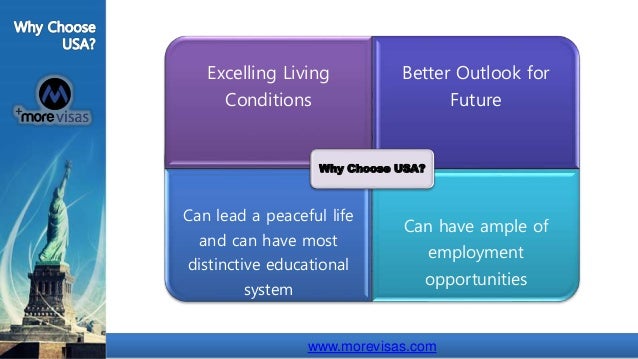
Who is eligible for H-2B visa?
To qualify for H-2B nonimmigrant classification, the petitioner must establish that: There are not enough U.S. workers who are able, willing, qualified, and available to do the temporary work. Employing H-2B workers will not adversely affect the wages and working conditions of similarly employed U.S. workers.
How long does a H-2B visa take?
60 to 100 days#H2B Visa processing time period Visa processing usually occurs within 60 to 100 days. It is advisable that the employer files this application at least 60 days but not more than 120 days before the temporary worker is needed.
How much does H-2B visa cost?
How Much Does an H-2B Visa Cost? As of January 2021, the USCIS processing fee for an H-2B petition is $460. If you need to apply for a US visa at an embassy or consulate abroad, the visa fee is $190.
How long can H-2B workers stay?
The H-2B classification allows for a maximum stay of three years. A person who has held H-2B nonimmigrant status for a total of three years must leave the United States for three months before applying for readmission as an H-2B nonimmigrant.
1. What is H2B visa?
The H-2B working visa is a nonimmigrant visa which allows foreign nationals to enter into the U.S. temporarily and engage in nonagricultural employ...
2. What is a 'one-time occurrence'?
The petitioner must establish that the petitioner has not employed workers to perform the services or labor in the past and the petitioner will not...
3. What is a 'seasonal need'?
The petitioner must establish that the services or labor is traditionally tied to a season of the year by an event or pattern and is of a recurring...
4. What is a 'peak-load need'?
The petitioner must establish that it regularly employs permanent workers to perform services or labor at the place of employment and that it needs...
5. What is an 'intermittent need'?
The petitioner must establish that it has not employed permanent or full-time workers to perform the services or labor, but occasionally or intermi...
6. What is the responsibility of the employer in establishing 'temporary need' for H-2B workers?
The employer has the burden of establishing that the need for H-2B workers is temporary and is either a one time, seasonal, peak, or intermittent n...
7. Is an H-2B visa issued only for temporary jobs?
The nature of the job itself is irrelevant. What is relevant is whether the employer’s need is truly temporary. In some situations, the employer’s...
8. What privileges do I enjoy on H2B visas?
On H-2B visas you may: Enter the U.S. for a temporary work and enjoy all employee benefits Get your dependents to stay with you in the U.S. Travel...
9. What are the limitations of H-2B visa?
The limitations of H-2B visa are : The job must be temporary in nature and the need is for one year or less. The employer’s need may not be ongoing...
What is an H-2B visa?
The H-2B working visa is a nonimmigrant visa which allows foreign nationals to enter into the U.S. temporarily and engage in non agricultural employment which is seasonal, intermittent, a peak load need, or a one-time occurrence.
What is the burden of establishing that the need for H-2B workers is temporary?
The employer has the burden of establishing that the need for H-2B workers is temporary and is either a one time, seasonal, peak, or intermittent need in his/her application. Documentation might include contracts, lists of projects and timeframes, as well as narrative explanations.
What is a temporary job opportunity?
Note: A temporary job opportunity could be created because the incumbent (who holds the position of permanent factory foreman) was injured or is otherwise unavailable for a period of less than one year, or additional workers are needed during a busy period. The temporary period must have a clear beginning and end.
How long do you have to notify USCIS of H-2A?
Petitioners must notify USCIS of an H-2A worker’s payment or agreement to pay prohibited fees to a recruiter, facilitator, or similar employment service within 2 workdays of gaining knowledge of such payment or agreement.
What does "workday" mean in USCIS?
Note: USCIS defers to DOL’s definition of “workday.” According to the Fair Labor Standards Act (FLSA), this generally means the period of time on any particular day when an employee begins and ends his or her “principal activities.”
Can a H-2B spouse be a H-4?
Any H-2B worker's spouse and unmarried children under 21 years of age may seek admission in H-4 nonimmigrant classification. Family members are not eligible for employment in the United States while in H-4 status.
Can a H-2B family member work in the US?
Any H-2B worker's spouse and unmarried children under 21 years of age may seek admission in H-4 nonimmigrant classification. Family members are not eligible for employment in the United States while in H-4 status. Employment-Related Notifications to USCIS.
Is there an exemption for H-2B in Guam?
The National Defense Authorization Act for Fiscal Year 2018 (FY 2018 NDAA) created an exemption for certain H-2B peti tioners on Guam and in the Commonwealth of the Northern Mariana Islands (CNMI) from the requirement to show that the need for a worker is temporary. This exemption has been extended and amended by subsequent NDAAs. Volume 2, Part I, Chapter 11 of the USCIS Policy Manual provides additional information and guidance on qualifying for the exemption.
What is an H2B Visa?
H2B Visas are intended for temporary workers who do not work in the agriculture industry. To qualify, businesses must have a need for temporary employees and be able to show that there aren’t enough U.S. workers who are willing and able to fill the need.
What Changes to H2B Visas Mean for Businesses?
The changes were aimed at strengthening protections for workers and increasing transparency.
How many H2B visas are issued each year?
There is also a cap on the number of H2B Visas awarded each year. The U.S. issues 66,000 of these visas each year, usually with half reserved for the first six months of each fiscal year and the other half reserved for the final six months.
What is the H-2B program?
The H-2B program is a temporary foreign worker program—al so known as a guestworker program. Guestworker programs authorize the employment of foreign workers by a U.S. employer, for a temporary period, with nonimmigrant visas. Nonimmigrant visas are temporary—i.e., the visa-holder must depart the United States by a date certain—and distinguishable from “green cards,” which are immigrant visas that grant permanent residence (and eventually citizenship, at the option of the beneficiary, if certain steps are completed). With the H-2B program (as with most other guestworker programs) the employer owns and controls the visa. In practice that means that if an H-2B worker is fired, he or she becomes instantly deportable.
When was the H-2B visa doubled?
In 2015, the H-2B visa program was effectively doubled through a provision (the “returning worker exemption”) introduced during the appropriations process. It is important that the recent expansion of this exploitative program not be continued in fiscal year 2017 and beyond—and that Congress allow regulations providing rights and higher wages to both guestworkers and U.S. workers to be fully implemented.
How does the returning worker exemption affect the number of H-2B workers?
It increases the number of H-2B visas that may be issued in fiscal 2016. Under the returning worker exemption, any person who was employed as an H-2B worker during the past three fiscal years may return as an H-2B worker in fiscal 2016 without being counted against the annual cap of 66,000.
How many H-2B workers are employed in the United States?
Congress has set an annual limit of 66,000 H-2B visas per year, but there are a few occupations that are explicitly exempt from this limit. In fiscal 2015, the State Department issued nearly 70,000 H-2B visas. 3 However, the “returning worker exemption,” which has been in effect since December 2015, is likely to result in a much higher number of H-2B visas being issued in fiscal 2016 than the annual cap of 66,000 (for more about the returning worker exemption, see the next section).
Are H-2B guestworkers paid the same as U.S. workers?
While “prevailing wage” regulations technically require employers to pay H-2B workers the local average wage for the particular occupation (as determined by DOL wage survey data), the vast majority of H-2B jobs are cert ified by DOL at lower-than- average wages for the particular occupation. One way employers can pay below-average wages is by using biased and unscientific private wage surveys to set wage rates for their H-2B employees. Prior regulations from 2008 allowing private wage surveys were struck down by a federal court, 17 but they are still allowed in a narrower set of circumstances under more recent and current regulations. The fiscal 2016 appropriations bill restricted DOL’s power to reject skewed surveys; there’s little doubt employer groups will attempt to extend this provision for fiscal 2017. Another method to lower wages is the creation of a sham union that is controlled by employers and bargains for wages that are lower than the DOL-established prevailing wages. 18
Does the H-2B program hurt migrant and American workers?
Yes . There are countless examples of H-2B migrant workers being exploited and robbed of their wages, and much worse. That’s why civil rights groups have referred to the H-2B program as “close to slavery.” 23 A recent journalistic investigation dubbed it “the new American slavery.” 24 The problems begin when H-2B workers are first recruited in their home countries. 25 Most pay large sums to labor recruiters who connect them to temporary jobs in the United States. 26 That leaves the workers who come to the United States indebted to their recruiters and employers. H-2B workers also cannot switch employers, which means that if something goes wrong on the job—for instance, if an H-2B worker isn’t paid the wage he or she was promised, or is forced to work in an unsafe workplace—the H-2B worker has little incentive to speak up or complain to the authorities. Complaining can result in getting fired, which leads to becoming undocumented and possibly deported. It also means not being able to earn back the money that was invested in order to get the job.
Who enforces the rules of the H-2B program, and is enforcement adequate?
DOL’s Wage and Hour Division (WHD) is in charge of enforcing H-2B program rules that relate to the labor market. However, WHD only has about 1,200 agents but is tasked with protecting the labor and employment rights of 150 million workers—which includes all H-2B workers and Americans who work in H-2B occupations. DOL simply does not have adequate staffing or resources to do its job. Nevertheless, every year it carries out a number of enforcement actions in the H-2B program and other guestworker programs.
